Introduction
Eyewear design is an exciting career merging fashion, industrial design, optics, and anatomy. As a designer, you conceive the style and form of each pair of glasses or sunglasses that millions gaze through daily. It’s a challenging yet rewarding path.
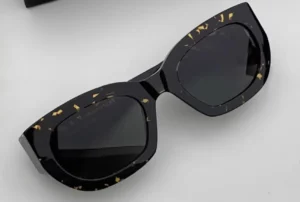
In this comprehensive guide, we’ll explore how to become an eyewear designer. We’ll look at critical skills like sketching, necessary education, important subjects to study, essential tools, day-to-day responsibilities, potential career paths, and the job outlook for roles in the optical industry. You’ll gain key insights into how to plan, train for, and excel in the field of vision product design.
By the end, you’ll understand exactly what steps to take from student to accomplished expert as an eyewear designer. Let’s examine how you can join this unique profession!
Chapter 1 – What Does an Eyewear Designer Do?
Eyewear designers create fashionable, functional frames and lenses to meet client needs:
- Conceptualize – Sketch eyewear styles matching target consumer demographics and trends.
- Design – Use digital software like CAD to model new glasses and sunglasses frame shapes and angles.
- Validate – Prototype and test new designs for durability, fit on diverse faces, and optical performance.
- Adjust – Refine and tweak products through feedback before finalizing production specifications.
- Supervise – Oversee frame materials selection, color choices, lens parameters, and manufacturing methods.
- Research – Continuously explore materials innovations, process improvements, and emerging technologies to inspire new designs.
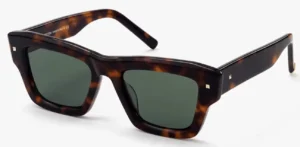
It’s a mix of artistry and problem-solving to protect and enhance vision aesthetically.
Chapter 2 – Important Skills for Eyewear Designers
Key abilities for success in the field include:
- Drawing – Hand sketch products and details in 2D/3D for ideation and communicating concepts.
- Spatial Reasoning – Visualize how shapes and components come together and operate in the real world.
- Technical Knowledge – Understand optical engineering, ergonomics, materials science, and manufacturing processes.

- Artistic Flair – Develop aesthetics pairing styling and functionality into compelling products.
- Math Skills – Grasp measurements, geometric principles, regression analysis, matrices, and vectors for optics calculations.
- Software Proficiency – Know CAD programs, lens design, project lifecycle management, and even office productivity tools.
- Communication – Convey and argue for design decisions throughout product development phases with groups spanning sales, engineering, marketing, and manufacturing.
A mix of creative and analytical strengths drives great vision product design.
Chapter 3 – Basic Eyewear Designer Personal Traits
In addition to skills, certain natural abilities enable success:
- Visualization – Envision how concepts translate into tangible products.
- Innovation – Constantly ideate fresh approaches and improvements.
- Curiosity – frequently question “why” and investigate possibilities.

- Perseverance – Overcome setbacks and iteration after iteration.
- Attention to Detail – Obsess over subtle nuances and touches.
- Commercial Awareness – Design for profitability and production.
- Passion – Truly care about people’s interaction with the products you conceive.
Certain innate perspectives and inclinations equip designers for the challenges ahead.
Chapter 4 – Important Designing Sunglasses Subjects to Study
Academic focus areas to master:
- Industrial Design – Practical product design education including materials, rapid prototyping, ergonomics, and manufacturing processes.
- Engineering – Optical, mechanical, and manufacturing engineering fundamentals.
- Physics – Light properties, optics, lenses.
- Math – Geometry, trigonometry, algebra, statistics.
- Art – Drawing, spatial composition, art history, color theory.
- Anatomy – Face, nose, ear structure, and sizes for fit.
- Computer-Aided Design – 3D modeling software skills.
Technical knowledge combines with creative development in top programs.
Chapter 5 – Helpful Sunglasses Designer Degrees and Certifications
Typical academic paths to begin a vision design career:
- Bachelor’s in Industrial Design – 4-year generalist product design degree provides a strong foundation.
- Bachelor’s in Engineering – Optical, mechanical, or manufacturing focuses offer relevant technical grounding.
- Master’s in Eyewear Design – Specialized programs exist at schools like Alba (Torino, Italy), Satva (India), and Central St. Martins (London).
- Optician Certification – Formal training in optical sciences, anatomy, and product fitting.

Some opt for engineering/physics first then supplement with design degrees. Alternative paths work too with dedication.
Chapter 6 – Key Eyewear Design Software
Digital skills to develop:
- CAD – Computer Aided Design software for 3D modeling of frames. Common choices: Rhino3D, SolidWorks, Cadence.
- Lens Design – ZeMax, Code V, OpticStudio, OPAL, LightTools model optics.
- Adobe Creative Suite – Photoshop, Illustrator, and InDesign for concept visuals.
- Microsoft Office – Word, PowerPoint, and Excel for documentation and analysis.
- Project Management – Asana, Monday, MS Project to track development.
Both specialty optical and common tools help take ideas to manufacturable products.
Chapter 7 – The Sunglasses Design Process
Eyewear products progress through typical product lifecycle stages:
- Ideation – Initial brainstorming to identify market gaps and sketch early concepts.
- Conceptual Development – Evolve rough ideas into workable designs defined enough for prototyping. Material choices, styling theme, technical feasibility evaluation.
- Modeling – Create 3D digital models with precise dimensions and lens geometry. Simulate fit on diverse head scans.

- Prototyping – Test physical printed versions. Verify technical operation, structural durability, fit, comfort, and optical clarity.
- Detailing – Select colors, textures, and finishes. Specify branding and accessory components like cases.
- Documentation – Create final technical drawings and manufacturing specs for handoff.
Incredible attention to detail makes the difference at every stage for flawless vision products.
Chapter 8 – Evolving Technologies for Eyewear Design
Cutting-edge tools expand possibilities:
- Digital Rendering – Computer-generated lifelike visualizations to evaluate designs.
- AR/VR – Immersive 3D previews of concepts on diverse user facial types.
- 3D Printing – Quick affordable functional prototyping of designs.
- Smart Glasses – Expanded HUD optics and connectivity enable innovative functions.
- Customization – Scanning for a tailored fit. On-demand manufacturing options.
- Sustainable Materials – Eco-friendly renewable or recycled material alternatives like bio-plastics or recycled metals.
- Lightweight Alloys, and Composites – Stronger thinner materials improve wearability and optics.
Eyewear innovation will continue accelerating as technologies enable new design capabilities.
Chapter 9 – Sunglasses Designer’s Daily Responsibilities
A typical day may include:
- Morning Briefings – Discussing objectives with the design team and collaborating on collections strategy. Delegating tasks.
- Research – Surveying trends in fashion, art, architecture, materials tech, trade shows, and pop culture for inspiration.
- Sketching – Hand drawing design concepts based on research and goals. Digitally compiling ideas.

- Meetings – Brainstorm with cross-functional groups like marketing, manufacturing, and engineering for feedback.
- Computer Work – Modelling concepts or refining technical specifications using CAD software. Emails.
- Evaluating Samples – Inspecting 3D printed or computer-milled prototypes against requirements. Suggesting revisions.
- Testing – Trying out competitor products to analyze strengths and weaknesses.
- Documentation – Finalizing drawings, renderings, materials specifications, and tolerance requirements for production handoff.
A dynamic mix of collaborating, creating, researching, and analyzing pushing eyewear forward.
Chapter 10 – Eyewear Design’s Specializations
Sub-fields allow narrowing focus:
- Frame Designer – Concentrates on innovating revolutionary new frames, from sketches to prototypes.
- Product Developer – Manages the technical side of taking prototypes through production. Liaises with factories.
- Computer-Aided Designer – Specializes in digital software modeling of products. May focus on optics.
- Materials Specialist – Passion for seeking better eyewear components, coatings, and compounds.
- Optical Engineer – Masters vision science and lens physics to improve optics and durability.
- Production Coordinator – Ensures smooth manufacturing with suppliers and oversees quality control.
- Fashion Designer – Provides artistic aesthetics and insights on styling frames, shapes, and palettes.
Finding your niche accelerates professional development in a chosen direction.
Chapter 11 – Eyewear Designer Career Paths
Typical career progressions include:
- Industrial Design Intern – Summer internships with manufacturers provide exposure.
- Junior Designer – Entry-level roles assist senior designers while learning basics.
- Designer – Works on frame concepts and technical development under a lead designer.
- Senior Designer – Oversees designers and specializes in certain models or brands.
- Principal Designer – Leader of a product design team who guides strategy and mentors junior staff.
- Creative Director – Manages design department goals, talent, and output across product lines.
- VP of Design – Establishes design language for entire brands and leads multiple creative teams.
Progressing through the ranks brings more responsibility, leadership, and influence over entire product roadmaps.
Chapter 12 – Major Eyewear Companies
Prominent employers include:
- Luxottica – Italian manufacturer of eyeglasses and sunglasses including Ray-Ban, Oakley, and Chanel brands.
- Safilo – Italian producer of Dior, Marc Jacobs, and other luxury eyewear brands.
- Marchon – Manufacturer of Calvin Klein, Coach, and other major fashion eyewear.
- Marcolin – Italian maker of Tom Ford, Balenciaga, Montblanc, and Roberto Cavalli eyewear.

- Mykita – High-design innovative German eyewear company.
- Silhouette International – Austrian company famous for rimless titanium frames.
- Hoya Vision – Leading lens technology producer.
- Zenni Optical – Affordable prescription glasses pioneer.
- Warby Parker – Trendy low-cost online prescription glasses retailer.
Major hubs exist in America, Italy, Japan, and China eyewear manufacturing over 1 billion eyeglasses annually.
Chapter 13 – How to Pitch Eyewear Design Ideas
Steps to effectively propose new designs:
- Research – Understand target demographics and identify whitespace opportunities in the vendor’s product mix.
- Prepare – Make sketches, technical drawings, and renderings to visualize the concept and details. Summarize core features and benefits.

- Schedule Meeting – Book time with key decision makers on the design team or in management.
- Practice – Refine presentation content and flow. Rehearse critical points. Prepare to defend ideas.
- Present – Professionally display visuals on slides, samples, or boards. Clearly explain the concept and value while demonstrating enthusiasm.
- Follow-up – Provide additional materials supporting feasibility like cost analysis or prototyping timelines.
With preparation and passion, designers win support to transform great ideas into reality.
Chapter 14 – Design Eyewear Portfolio Essentials
Critical elements to include in your portfolio:
- Sketches – Show hand-drawn concepts conveying styles, ergonomics, and details. Variety in ideas.
- Process – Reveal development progression from early scribbles to refined technical illustrations.
- CAD Models – Demonstrate software skills with attractive 3D digital renderings. Multiple angles.
- Mockups – Images of 3D printed models show the ability to make concepts tangible.
- Background – Provide education credentials, resume, awards, and testimonials.
- Logical Flow – Group by project or theme to convey vision and narrative in the work.
- Visual Quality – Portray concepts neatly and vibrantly. Written details.
A strong portfolio captivates while revealing abilities at each phase of development.
Chapter 15 – Creating a Standout Eyewear Design Portfolio
Tips for next-level portfolios:
- Focus – Curate only your very best, most relevant design work. Quality over quantity.
- Format – Bind into a clean, professionally printed physical book format for in-person reviews and interviews. Include a digital PDF version.
- Tell a Story – Allow the viewer to follow a progression from early concept to prototyped result.

- Show Sketches – Include annotated initial hand drawings conveying key style inspirations, and motions.
- Use Great Photography – Show portability, details, materials, and utility through product shots.
- Explain Process – Call out unique techniques used in certain designs using captions.
- Unify Branding – Create a logo, color scheme, and fonts that represent your “design studio” identity.
Portfolios are a designer’s signature. Ensure yours makes you shine.
Chapter 16 – Eyewear Design Tools
Essential tools include:
- Notebook and Pens – Always record inspirations and sketch concepts.
- Digital Camera – Document designs and progress.
- Calipers – Take precise measurements of prototypes.
- Computer – Run CAD software and store information.
- 3D Printer – Useful for creating early prototypes to test.

Optional:
- Tablet – Portable digital sketching.
- 3D Scanner – Captures shapes, contours, and dimensions.
- Prototyping Shop Access – Useful for fabricating custom parts.
- Spectrometer – Tests transmission properties of lens materials.
A toolkit tailored to your specific design niche streamlines creating.
Chapter 17 – Design Sunglasses’ Daily Work Environment
A designer’s office setting varies by company but typically includes:
- Computer workstation – For 3D modeling, documentation. Dual monitors are helpful.
- Whiteboards – Brainstorming and displaying concepts.
- Large tables – Spreading out schematics, prototypes, and samples.
- Hand sketching space – Wall mounts to hang and critique drawings. Drafting table.
- Displays – Samples, prototypes, competitor products. Inspiration.

- Prototyping tools – 3D printers, workshop machines.
- Ergonomic furniture – For long hours using computers.
- Collaborative areas – Lounges, and meeting rooms to interact with internal teams.
The space must balance focus and collaboration to spark product innovation.
Chapter 18 – Perfecting Your Eyewear Design Skills
Pushing to advance as a designer takes:
- Practicing Sketching – Fill notebooks with quick concept doodles daily. Vary styles.
- Learning Software – Take online tutorials. Explore capabilities. Experiment often.
- 3D Printing – Print designs frequently, critique results, and refine techniques.
- Meet Eyewear Professionals – Talk shop at conferences and industry events.

- Stay Current – Follow blogs and magazines about fashion, culture, technology, retail, manufacturing, and materials for trends.
- Network Internally – Discuss processes with engineering, marketing, and sales colleagues.
- Visit Labs and Factories – See firsthand how products are made. Discuss pain points.
Immersing yourself in the field boosts knowledge and stimulates your perspective.
Chapter 19 – Designer Attending Eyewear Industry Trade Shows
Major events include:
- MIDO – Leading optical fair in Milan, 200,000+ attendees each February. Presents innovations in manufacturing, new technologies, and fashion-forward designs. Attendees span 150 countries.
- Silmo – Major Paris optics show every odd year number, of 90,000 visitors. New styles and high-end brands are exhibited. Considered the main fashion event alongside MIDO.
- Vision Expo – Held twice annually in the US, draws thousands involved in optical retail. Showcases protect fashion brands and lenses.

- Hong Kong Optical Fair – An important Asian manufacturing hub trade show displaying advances in lens coating, manufacturing automation, and packaging.
- CIOF – Shenzhen, China event focused on frames, lens materials, and processing equipment. Massive vendor list.
Globe hopping trade shows fuel inspiration for regional styles, cultural trends, and new technologies.
Chapter 20 – Joining Eyewear Design Professional Associations
Notable groups include:
- Optical Women’s Association (OWA) – Supports women in optical careers via networking and education. Local chapters. Annual leadership conference.
- American Board of Opticianry (ABO) – Administers optician certification program and continuing education.
- American Academy of Optometry (AAO) – Organization of doctorate optometry degree holders. Publishes research journals and hosts conferences.
- The Vision Council – Trade group representing optical manufacturers, suppliers, and retailers. Good for connecting with industry peers.
- International Society for Optics and Photonics (SPIE) – Scientific society focused on optics research and education.
Associations build your professional network while providing development opportunities.
Chapter 21 – Eyewear Designer Salary Ranges
Typical pay for US designers:
- Entry Level – $40,000 to $55,000
- Staff Designer – $55,000 to $71,000
- Senior Designer – $71,000 to $97,000
- Principal Designer – $97,000 – $117,000
- Creative Director – $117,000 to $187,000+
Experience level, company size, and location impact pay ranges. But skills are in steady demand.
Chapter 22 – Eyewear Designer Learning Technical Optics and Engineering
Foundational knowledge like:
- Light energy – properties, vision interaction, manipulation with lenses.
- Lens materials – coatings, substrates, manufacturing methods.
- Ophthalmic parameters – lens thickness, curvatures, power, indexing, standards.

- Anatomy – the structure of the eye, variations, and issues addressed by eyewear.
- Manufacturing – materials, processes, equipment, limitations impacting design.
- Ergonomics – principles guiding user-centered designs optimized for eye anatomy, and head motions.
- Standards – FDA regulations, ANSI Z80 safety protocols.
Scientific and engineering foundations transform imaginative concepts into manufacturable, effective vision products.
Chapter 23 – Eyewear Designer Gaining Optical Shop Experience
Hands-on learning opportunities:
- Summer Internships – Many factories and brands offer programs. Gain production floor visibility.
- Lab Technician Role – Learn the basics of adjusting and fitting glasses at an optical shop. Valuable client interaction.
- Shadowing – Ask nearby eyecare professionals if you can quietly observe appointments and frame selection discussions.
- Volunteer Programs – Organizations like Optometry Giving Sight or local clinics often need help. Great way to absorb practical knowledge.
- Online Optician Training – Take optician certification courses through groups like the American Board of Opticianry. Study at your own pace.
- Attend Vision Expos – Sit in on lectures at large vision care conferences. Demo the latest eyewear products on exhibit floors.
Firsthand experience provides insights no classroom alone can offer.
Chapter 24 – Developing CAD and Technical Drawing Skills
Practice foundations like:
- Sketching – Hand draw designs from all angles with proper perspective and shading.
- Drafting – Use scales, markers, and templates to make clean detailed technical drawings.
- 3D Modeling – Advance from blocky shapes to smoothed, sculpted frames and components.
- Digital Rendering – Add colors, textures, and environment maps to CAD models to visualize designs.
- Documentation – Become fluent in communicating every specification to manufacturers.
- Analysis – Use software to simulate stress, fit, and manufacturability.
- Production Methods – Learn nuances and limitations of real-world manufacturing processes that impact geometries.
Virtual design skills make ideas manufacturable.
Chapter 25 – How to Become a Better Designer
Tips for continual improvement:
- Keep a Notebook – Always document observations, and ideas to exercise creativity.
- Seek Critique – Ask mentors and expert colleagues for honest feedback on work.
- Study Classics – Revisit timeless iconic eyewear designs that stood the test of time. Analyze why.
- Observe Users – Watch how people truly interact with and select eyewear. Notice pain points.
- Catalog Ideas – Collect inspiration images, color palettes, and textures in organized albums.
- Hone Drawing Skills – Practice quick sketching daily. Vary subjects and styles.
- Read Non-Fiction – Stay sharp in learning new concepts outside design that spark big-picture connections.
- Travel – Gain fresh perspective and inspiration through new environments, and cultures.
Great designers perpetually fuel their creative potential.
Chapter 26 – Starting Your Own Eyewear Company and Create A Sunglasses Brand
Entrepreneurial designers can find startups designing niche, custom, or specialized eyewear:
- Research your target demographic – Identify an underserved niche like seniors, sports, fashion, etc in need of tailored offerings. Talk to potential customers directly to pinpoint needs.
- Determine capabilities – Outline production plan based on available budget, partners, and in-house skills. Will you design, manufacture, distribute, or only prototype initially?
- Refine product positioning – Test early designs and messaging with focus groups. Iterate until you nail the combination of style, performance, and pricing that clicks with your audience.

- Create a business plan – Thoroughly map out product offerings, production, marketing, funding, hiring, distribution, and growth strategies. This guides decisions.
- Seek partners – Find contract manufacturing and sales partners to scale while controlling costs if not handling production yourself.
- Launch and iterate – Get your minimum viable product to customers, collect feedback, and keep improving while building community support.
With grit and strategic focus, visionary designers transform ideas into successful brands serving once-ignored niches.
Chapter 27 – Eyewear Design Job Outlook
The future looks bright for skilled eyewear professionals based on:
- Market Growth – Eyewear sales are expected to steadily increase with vision correction needs and new technologies. Value hits $255 billion by 2028 per Statista.
- Demographics – Aging global populations require more vision products over the coming decades.

- Customization – Mass customization and personalized medical solutions command premium pricing.
- Technical Innovation – Emerging materials, manufacturing methods, and augmented reality capabilities require expert integration via clever designs.
- Prevention – More eyewear is needed as UV and blue light protection is emphasized for health.
- Global Middle Class – Rising disposable incomes especially in developing nations allow investment in vision correction.
Economic headwinds can temporarily deter discretionary purchases but underlying eyewear demand stays robust long term.
Conclusion
With a dedication to honing technical skills and relentlessly pursuing innovative artistry, you can thrive as an eyewear designer. Passion plus preparation creates opportunity. By following those with successful careers in combining industrial design, engineering, and optical sciences, you can join the ranks conceiving fresh, compelling, and effective new vision products enjoyed by billions. The journey begins with simple pen-on-paper sketches consistently practiced. Before long, your ideas will take shape in the hands and on the faces of people worldwide.
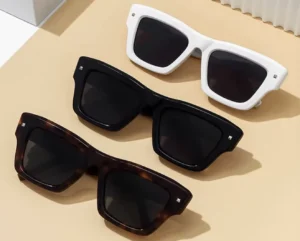
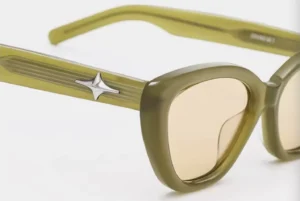
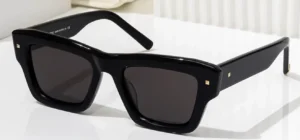
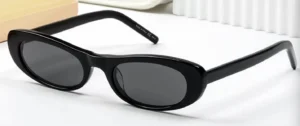

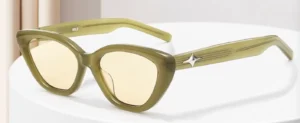
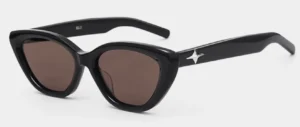
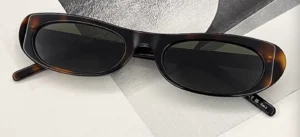
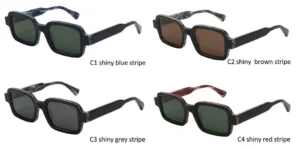

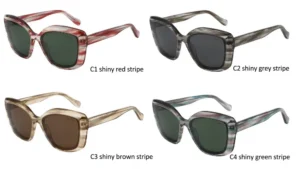
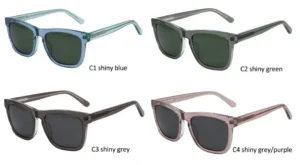
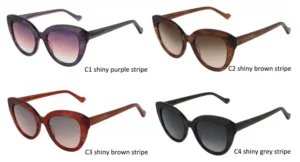
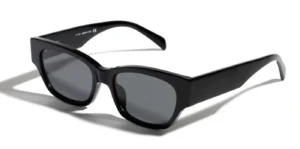

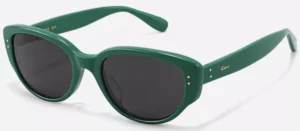

3 thoughts on “How to Become an Eyewear Designer”
Hi idetaileyewear
I’m looking to design my own custom eyewear. What is the process with your company? Can I purchase samples? How many at one time? Also I would like a copy of your catalog.
Thank you
Rita Sanders
Ruqieyewear@gmail.com
Thank you for posting this information, Mr. Leo. It is exactly what I was looking for.
Hi Danny,
Many thanks.